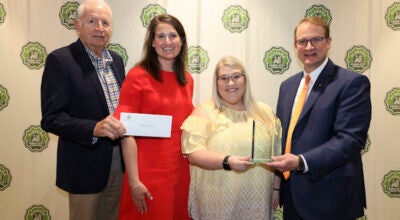April marks Autism Awareness Month
Published 12:09 pm Saturday, April 10, 2010
April marks Autism Awareness Month, as officially recognized by the U.S. to highlight the developmental disability typically diagnosed in the first three years of children’s lives.
Autism is a complex developmental disability that affects a person’s ability to communicate and interact with others. It is defined by a certain set of behaviors and is what’s called a “spectrum disorder” that affects individuals differently and to varying degrees.
The Autism Society has celebrated National Autism Awareness Month since the 1970s. People can wear puzzle ribbons representing awareness. Others wear pins and place magnets on their cars.
According to the Autism Society Web site, there is no known single cause for autism. The organization’s primary objective is to provide increased awareness and funding can help families today.
Alabama Rep. Cam Ward created the Alabama Autism Task Force in 2007. He has a child on the autism spectrum and also has friends whose children have autism. His personal experience with the disability led to his concerted effort to raise awareness throughout Alabama.
A pertinent issue related to autism is whether or not adequate services are being provided both quantitatively and qualitatively across the nation and Alabama. Ward believes the state is falling short at the moment.
“Like many other states in our region, Alabama is far behind in the level of services we need to provide for those on the spectrum,” Ward said. “While we are slowly making progress, I am sad to see how far we are behind in the area of insurance reform and therapy services.”
As autism rates continue to rise, the state could see a rise in transition services for older children with autism. Ward said that topic has been a priority for the Alabama Interagency Council on Autism, which helps formulate a plan to assist those on the spectrum.
Signs children are demonstrating autistic behavior:
– Lack of or delay in spoken language
– Repetitive use of language and/or motor mannerisms (e.g., hand-flapping, twirling objects)
– Little or no eye contact
– Lack of interest in peer relationships
– Lack of spontaneous or make-believe play
– Persistent fixation on parts of objects






